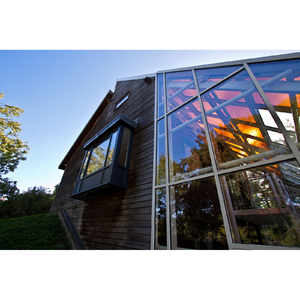The future of Eco-Living
Imagine a home which would automatically switch off the lights for you whenever the sun appears; a home which could tell you when you are ‘out and about’, that your son has left the T.V and playstation on; or even a house which has been developed with micro glass sphere-enriched paint on the walls which has properties making it ideal for insulation.
Well there is, and it exists on parkland beside the M1 just north of Watford – but only in prototype. At the present time it is still undergoing testing by scientists at the BRE (Building Research Establishment). It shows a glimpse of the kind of gadgets, materials and other gizmos we can expect to find in our homes over the next few years. The BRE are currently working with other partners to find suitable ways to store Solar PV electricity as heat, which can then be converted back whenever electricity is needed.
“This is still a fair way off but one day will be achievable, and gets around the drawback of solar electricity, which is that in northern latitudes like our own, it doesn’t provide when it is most needed.” Inside the house light and motion sensors ensure the most efficient use of low-energy lighting systems and app-enabled “smart plugs” allow switch and socket monitoring of electricity use. The BRE Smart Home is a renovated house built in 1998. Now scoring an A/B rating the Smart Home demonstrates how much energy efficiency technologies have improved. While the existing walls still perform well, the so-called “House of the Future” only scored an E on current Energy Performance ratings before the refurbishment this year.
“Fifteen years ago this house was at the cutting edge of technology but a lot of the original materials and designs have become outdated,” says John O’Brien. He points to the original rainwater harvesting system which has become obsolete. “The water was collected underground but the pumps failed and leaves then clogged up the system rendering it more hassle than it was worth,” he says. The refurbished house will use an ‘under the leaves’ rainwater tank, a wide, shallow collector that distributes the weight of the water evenly inside the roof. “This will then allow it to feed the toilets and appliances by the use of gravity rather than having to use a pump, which can go wrong and use energy.”

